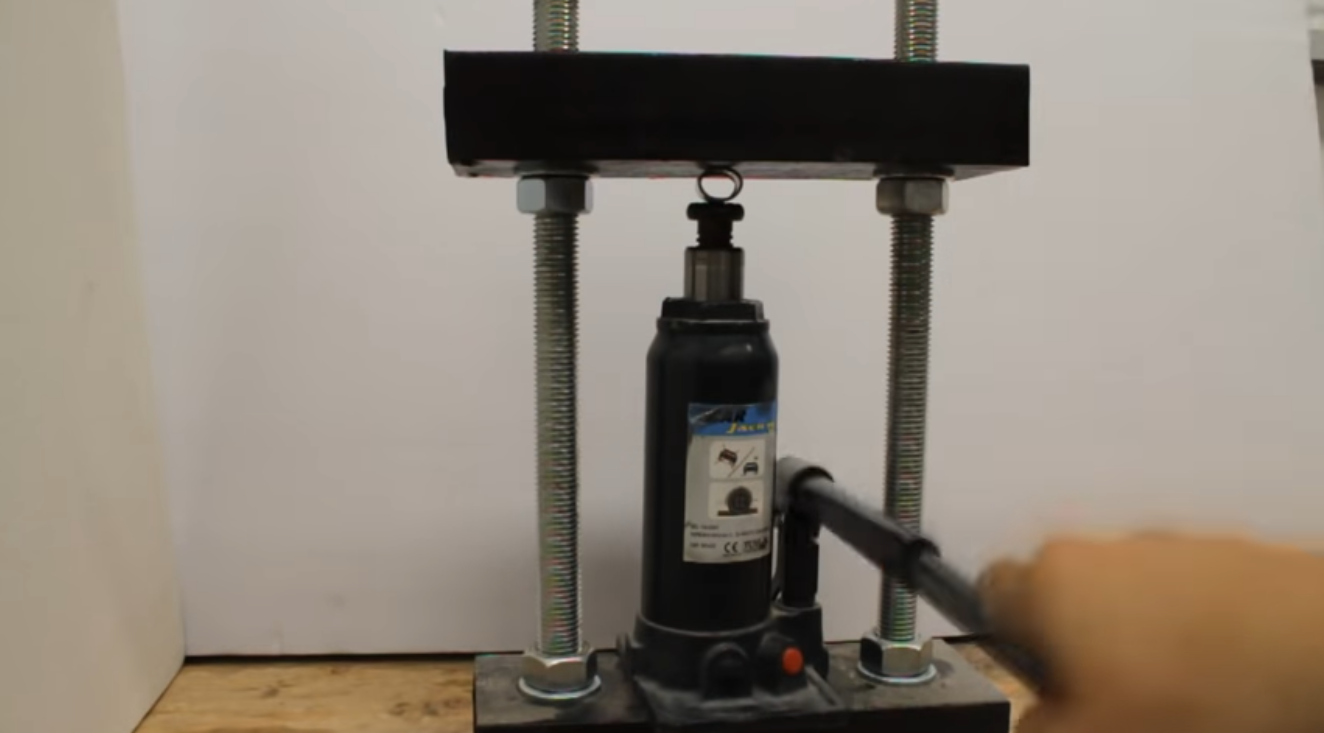That press you have won't get the job done, you need 10-20 ton large press.
I have done that type in a big vice on a large stout workbench , long large tapered punch or iron workers alignment bar, 5lb hammer and the appropriate sized impact sockets.
I clamped the part with 2 holes (clamp the machined surface) in the vice, snap ring side side up, use the hammer to really tighten the vice. Stick the punch through the hole on the opposite side and block the end of the tapered punch up from the bench to make it fairly level so the assembly cannot pivot downward toward the bench when you start wailing on it with the hammer. If the bench the vice is on is not stout enough you will get too much rebound and you may not get the bearing out, I always used a heavy steel home made bench, 3/8-1/2 thick steel plate top.
Pick a deep impact socket that is slightly smaller than the inside of the wheel bearing, (use the new bearing figure that out.)
Place the socket on the inner hub and start hitting it as hard as you can, it takes a while but it will push out. Keep checking the vice is kept tight. If it does not move get a bigger hammer. I always had a helper when doing these.
Once out you can remove the snap ring and use a larger socket to push or hammer the bearing out from the other side. Once the bearing is out, clean the snap ring groove and bearing hole, lube the hole, lube the new bearing on the outside and press it in, put in new snap ring. then press (or hammer) the spindle into the new bearing while using a large socket on the other side to support the inner bearing race so you don't damage the snap ring or the new bearing.
This is the only way I have ever done this type since making a press jig for the assembly would require a machine shop and welder.









